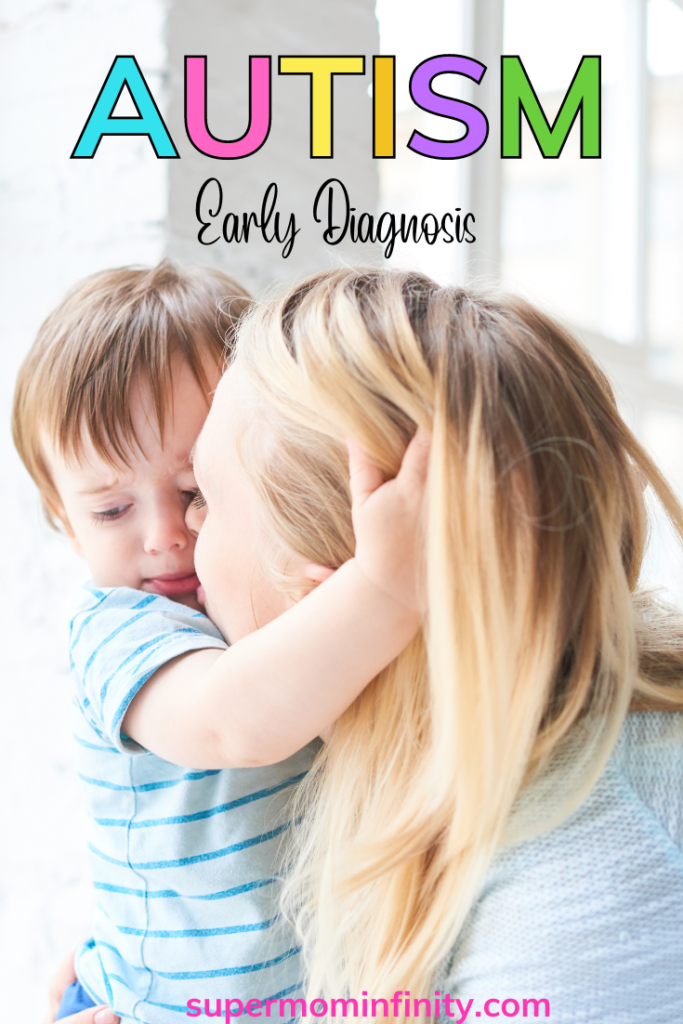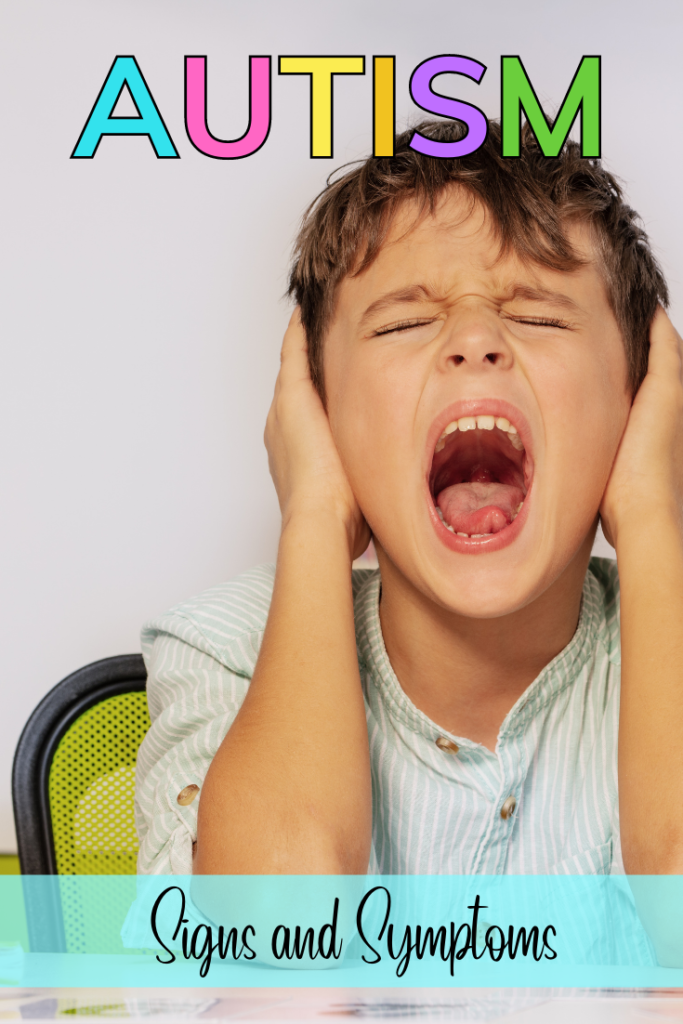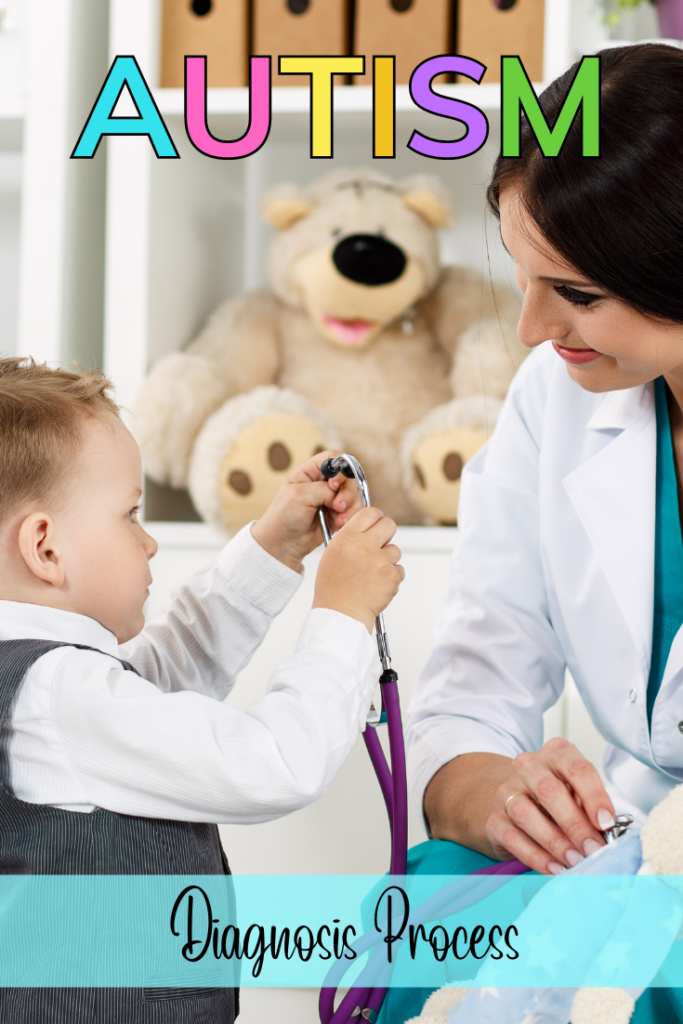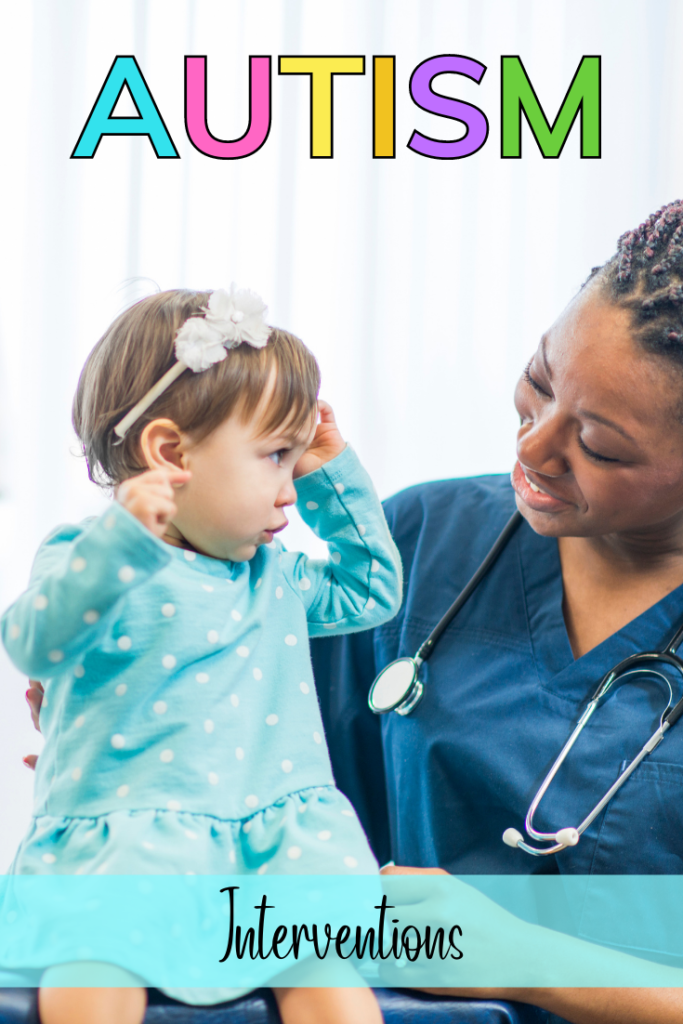
The Ultimate Guide to an Early Autism Diagnosis
Hi, I’m Holly and I will be sharing our personal experiences leading up to our daughter’s Autism Diagnosis. The ultimate guide to an Autism Diagnosis will provide you with resources every parent should know. You will gain insight of our personal journey into Autism and the process that lead our daughter to receive an Autism Diagnosis.
SuperMomInfinity is a participant in the Amazon Services LLC Associates Program, which is an affiliate advertising program designed to provide a means for sites to earn advertising fees by advertising and linking to Amazon.com. Please read my Disclosure for more details.

What is Autism?
Autism is a unique diagnosis that presents itself differently within each child. Autism is a spectrum which means there are many levels. All Autistic children will not all have the same signs or symptoms. However, you may see some of the same symptoms. Autism Spectrum Disorder resides in the nervous system and causes developmental delays, behavioral concerns, and other disorders. Typically, Autism will become noticeable around 18 months of age.
Early Autism Signs and Symptoms
Autism signs and symptoms are usually learned by parents after concerns are observed and addressed. This is why scheduled doctor visits are so important because we would still believe his or her specific preferences and unique ways were okay. Don’t get me wrong, your child’s specific preferences, likes, and dislikes resemble us as humans. Everyone in the world has their own likes, dislikes and can only tolerate certain things. However, with Autistic children, these behaviors are more noticeable and can cause internal distress. As you continue along we will be answering some of those “why” questions we tend to ask ourselves when viewing unfamiliar behaviors. Such as loud noises or running water can cause your child to hold their ears. But why? From our experience holding ears can mean your child’s ears are severely sensitive to certain sounds. When you see something that is causing your child distress it may be time to implement an intervention. For example, I now know certain water sounds like the washing machine running, and also the sound of an airplane passing causes our daughter to hold her ears. I observed the cause now it’s time to make a modification or implement an intervention. So, while she is at school I would wash the clothes. Also to prevent the discomfort from the sound of an air plain we considered earmuffs for outdoor times.
Another example is: My daughter would always place her arms inside her short sleeve shirt. So, I figured ok, she is probably cold. I replaced the short sleeve shirt with a long sleeve shirt and then she stopped. But why? Autistic children are a risk for low iron. Not knowing this initially. However, low iron can cause iron deficiency anemia, and being cold is a symptom of anemia. At her doctor’s appointment, her blood was taken and her iron levels were low. Now we know the cause and can implement an intervention. She is currently taking iron supplements and we are adding more iron-rich food into her diet. Be advised iron can cause constipation, so fiber-rich foods should be considered as well.
I literally tried to figure out everything about her. It was like getting to know her all over again. So, I continued to research all the “why’s” I didn’t have an answer for.
Conducting research and observing your child is the best advice at this moment. I will be sharing the initial steps to take when concerns of Autism are observed and resources to get you going.

Your child’s Autism signs and symptoms can and will be different from other Autistic children. Here are a few signs and symptoms we have experienced:
★ Lining up Toys Horizontally or Vertically
★ Unbalanced without a Consistent Routine
★ Oral Stimming
★ Holding Ears due to Certain Sound
★ Delayed Speech
★ Transition Tantrums
★ Poor Eye Contact
★ Unable to Follow Simple Commands
★ Hard to fall Asleep at Night
★ Satisfied with Tactile Textures
★ Not Answering to Name
How is an Autism Spectrum Disorder Diagnosed?
An Autism Spectrum Disorder is diagnosed after the acknowledgment of two or more, signs, symptoms, behaviors, and so forth that resemble Autism. We initially did not have any suspension or concerns for our daughter. Literally, we thoughts she may be just a little spoiled, but not developmentally delayed. However, at her 18 monthly check-ups, we were given the M-CHAT questionnaire.

Autism Diagnosis Screening: The M-CHAT Questionnaire
The M-Chat Autism Screening tool is about 20 questions long. This test will ask you questions in relation to your child’s current developmental abilities and activities of daily living. The M-CHAT is a screening tool used to retain information and is given to parents at the 18-month mark. However, the questionnaire does not diagnose your child with Autism, but it’s used as a guideline for your provider in making sure your child is developing appropriately for his or her age. It’s a tool to move to the next step in receiving early interventions and conducting a diagnosis. Learn more about the Modified Checklist for Autism in Toddlers.
Autism Developmental Nurse Practitioner
Your child’s Primary Doctor or Pediatrician will submit a referral for your child to a Developmental Pediatrician/Autism Specialist for an evaluation. We were placed on a waiting list that may last up to a year. During our wait, my daughter started speech therapy, due to her speech delay. Also evaluated by an Occupational Therapist for her fine motor development delay. During the therapy session, I asked a ton of questions about early Autism. However, most therapists were able to point out early Autism red flags. I started to mentally prepare myself for a possible Autism diagnosis.
Early Autism Diagnosis
After a few months passed, it was time for the big day. To give you a brief of the visit, it’s about an hour-long. The Specialist will observe your child’s current behavior, you fill out questionnaires in relation to your child’s developmental abilities such as:
★ Physical Development
★ Cognitive Development
★ Fine Motor
★ Social and Emotional
★ Sensory Behaviors
★ Challenging Behaviors
★ More Behavior Stuff
After all the questionaries, observation, and evaluation the Specialist may see Autism, both Autism and ADHD, or just another Disorder. However, if Autism is noted and or slightly noted by the Specialist a diagnosis of Autism will be given. Parents at this point, you are semi emotionally prepared to hear your child’s Diagnosis. However, the greatest thing about early diagnosis is early intervention.
Quick Notes: At age 6, an Autism reevaluation is to be conducted. This gives the child time to grow and develop. Again, and again all children do not develop, learn, jump, skip or hop at the same age PERIOD. However, receiving an Autism Diagnosis at the age of 2 opens the door for early intervention.

What is Early Childhood Intervention: Autism ECI
Autism Early Childhood Intervention is a team of therapists designed to target specific developmental delays and disabilities. E.C.I. have speech therapist, occupational, behavioral, physical, and more. This program is one of my favorites and provides service to children from birth to age 3. The staff was amazing, super sweet, and dedicated to helping our daughter achieve goals.
How to get Early Childhood Intervention Services?
Early Childhood Intervention Programs are highly recommended for early interventions. Birth to age 3 is your child’s most delicate age period. They learn so much during this age. Of course, receiving ECI is on an insurance/diagnosis/disability basis. Also, ECI is starting to franchise in more states and is not offered in all states. Our pediatrician sent the referral and ECI contacted us. They asked about insurance, reviewed the referrals from our Nurse Practitioner, and my daughter was approved for services. You do have to go through the basics of providing your information, household members, income, and so forth. To be fairly honest, both the Developmental Nurse Practioner and Primary Pediatrician sent referrals. Guess this was a just-in-case measure to ensure ECI receives the referrals. So, how to get ECI service?
Steps to Receiving ECI for Autism
ECI is offered in most states. Talk with your child’s Primary Physician for recommendations and referrals. You can also contact your state’s Health and Human Services Department for more information related to your residing state. Let’s get into some brief details and examples on how both entities operate in assisting families with Autistic children.
Autism Primary Pediatrician
Your Primary Pedicatrian typically is the first person to medically know your child. He or she will be the one to give you the 18-month developmental questionnaire. If possible delays are observed, your pediatrician will send referrals to the appropriate entities. You may receive numbers to contact but likely the entities will contact you. Scheduled appointments for your child are very important for your child’s health, growth and development. Maintaining scheduled appointments with a Pediatrician gives you, your child, and the provider the opportunity to build a relationship. Also makes you more comfortable to voice concerns about your child.
Quick Note: Being open and honest with your provider is important. Symptoms you see your child doing that you may think are concerns, but feel they are shameful or embarrassing topics are common/typical for your provider. These are the things they studied and went to school for. If something is not typically within their knowledge, your provider knows people that know people who can assist, intervene, give insight and provide resources. It’s okay! I felt the same way speaking about certain behaviors, symptoms, and sign my daughter have and did.
Health and Human Services Department
Hopefully, you will not have to do much leg work for getting services for your child. However, you can contact your local Health and Human Services Department within your state. The CDC provides a state-by-state list for contacting ECI direct.
Autism Pathways Program: Early Childhood Intervention
The Autism Pathways Program is absolutely amazing. This program is an additional program through ECI. Meaning ECI therapists are trained in delivering this service through the Pathways Program. This service may be offered if the therapist observes Autism signs and symptoms from your child. To this day, my heart goes out to each and every member of the Pathways Program because they encouraged my 2 years to answer to her name, make eye contact, and follow simple commands. The Pathways trained therapists from ECI taught these communication skills through play. They offered strategies, focus on setting and accomplishing goals. Not only that, they are hands-on, dedicated, and offer a play-based experience for our daughter.
Quick Note: Asking questions to all members of your child’s care team shows your concerns and wants for your child to receive the best and achieve goals. However, one specific question I found myself asking a lot is, DO you see Autism? Does my daughter show any signs and symptoms of Autism? What do you see that resembles Autistic behaviors? All of these questions were asked to her therapist. They are able to tell you if Autism signs and symptoms were observed, but not able to give you a Diagnosis.
This program also teaches you the strategies and encourages you to continue practicing with your child. Yes! You have homework, which was why I really enjoy having them as a part of my daughter’s care team.
How to Recieve the Autism Pathways Program?
Ok, so we went to the pediatrician, he or she wrote a few referrals, and one of them landed on the Developmental Nurse Practitioner desk. There your child was diagnosed with Autism. The DNP also sent duplicate referrals out for speech, occupational, and physical therapy. After your child is evaluated by each therapist, he or she will offer you a service if your child meets the requirements. Such as, showing a developmental delay.
So, we are approved for Speech and not OT or Physical Therapy, vice versa. That’s okay. This typically means, your child is currently developing appropriately in those areas.
Speech is amazing, your child loves their new speech therapist and both you, your child and therapist are getting to know each other. Your therapist observes your child does not make eye contact during interaction with others and hasn’t responded to his or her name being called. This is considered a possible Autism Red Flag. Your current therapist will then offer you the Pathways Program.
Treatments for an Autism Spectrum Disorder?
After receiving the M-Chat and collaborating with your child’s provider, he or she will recommend therapy. The MCAT has a scoring system that puts your child in certain therapy recommended brackets. Speech therapy is commonly recommended first, due to your 18 month old not saying 100 to 150 words. Also, currently experiencing poor eye contact or do not respond to his or her name when being called. Your provider will refer your child to the appropriate therapist for their developmental delay. Here are a few therapy interventions you can become familiar with.
★ Autism Speech Therapy
★ Occupational For Toddler Autism
★ Autism Physical Therapy
★ Behavioral Therapy
Autism Spectrum Disorder
As you walk this endless Journey with your child you will continue to learn and understand Autism as it presents itself within your child. However, how my daughter was diagnosed with Autism and the intervention she received felt important to share. Even though some of these resources vary in each state or stop at a certain age, getting starting early is highly recommended.
An Autism Spectrum Disorder requires your time, patience, and your dedication to meeting the needs of your child. Within the last past year, I have learned a lot about my daughter. Her likes, dislikes, what irritates her, what makes her comfortable, and so forth. It is also important to know what to do next once your child is Diagnosis with Autism. Start your Autism Journey with the “What’s Next? 5 steps Autism Beginner’s Guide”.
